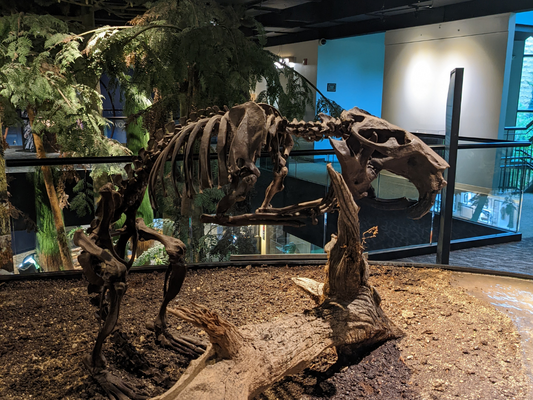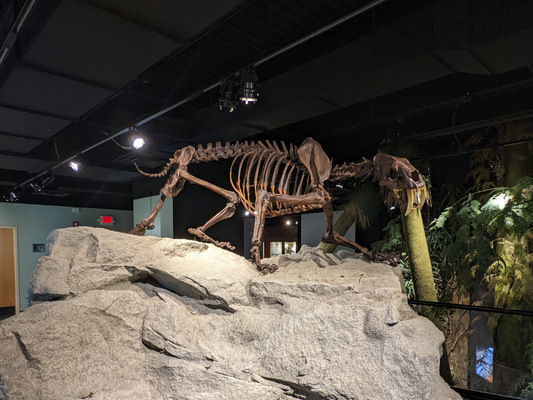Pleistocene Illinois
Ice Age In Illinois!
Did you know a sheet of ice a mile thick once covered Rockford?! Burpee’s Pleistocene exhibit is a walk back in time to learn how huge masses of slowly moving ice, called glaciers, carved out the landscape we see today. Who roamed the Midwest? What did the land look like?
During the last 1.6 million years, Illinois changed dramatically.
Strange large mammals, now extinct, inhabited the tundra around the periphery of the glacier. Mammoths and mastodons traveled in herds; the saber-toothed cat, or Smilodon, hunted for prey, and many of the animals we still know today roamed the land. Check out the survivors and fossils of the past in the Burpee Museum Ice Age Exhibit.
WHO CAN YOU SPOT IN THIS EXHIBIT?

Castoroides ohioensis
GIANT BEAVER
A huge beaver is found throughout most of North America. It was much larger than today’s beaver and approached the size of today’s black bear. Some studies estimate that the largest giant beaver could reach almost 300 pounds! (1.4 million–11,000 years ago)

Smilodon fatalis
SABERTOOTH TIGER
Notice the large forearms on the Smilodon skeleton. They are massively built and used to subdue their prey. Their long canines, or “sabers,” helped to deliver a fatal blow to the neck of the animal.

Megalonyx jeffersonii
JEFFERSON’S GROUND SLOTH
Sloths in Illinois! This mammal stood as tall as 10 feet and had a large, blunt snout, long claws, and teeth with an outer layer of dentine rather than enamel. In life, this sloth was likely covered in thick hair and lived in woodlands and forests.
